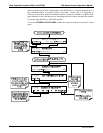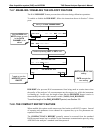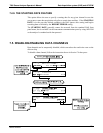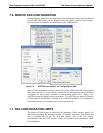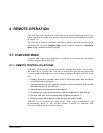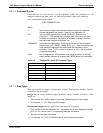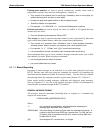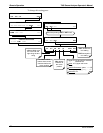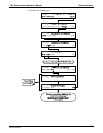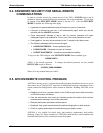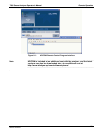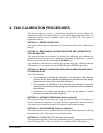
Remote Operation T400 Ozone Analyzer Operator’s Manual
176
Floating-point numbers are used to specify continuously variable values such as
temperature set points, time intervals, warning limits, voltages, etc.
They consist of an optional plus or minus sign, followed by zero or more digits, an
optional decimal point, and zero or more digits.
At least one digit must appear before or after the decimal point.
Scientific notation is not permitted.
For example, +1.0, 1234.5678, -0.1, 1 are all valid floating-point numbers.
Boolean expressions are used to specify the value of variables or I/O signals that may
assume only two values.
They are denoted by the keywords ON and OFF.
Text strings are used to represent data that cannot be easily represented by other data
types, such as data channel names, which may contain letters and numbers.
They consist of a quotation mark, followed by one or more printable characters,
including spaces, letters, numbers, and symbols, and a final quotation mark.
For example, “a”, “1”, “123abc”, and “()[]<>” are all valid text strings.
It is not possible to include a quotation mark character within a text string.
Some commands allow you to access variables, messages, and other items, such as DAS
data channels, by name. When using these commands,
you must type the entire name of the item
you cannot abbreviate any names
8.2.1.4. Status Reporting
Reporting of status messages as an audit trail is one of the three principal uses for the
RS-232 interface (the other two being the command line interface for controlling the
instrument and the download of data in electronic format). You can effectively disable
the reporting feature by setting the interface to quiet mode (Section 6.2.1, Table 6-1).
Status reports include wa
rning messages, calibration and diagnostic status messages.
Refer to Appendix A-3 for a list of the possible messages, and this for information on
controlling the instrument through the RS-232 interface.
GENERAL MESSAGE FORMAT
All messages from the instrument (including those in response to a command line
request) are in the format:
X DDD:HH:MM [Id] MESSAGE<CRLF>
Where:
X is a command type designator, a single character indicating the
message type, as shown in the Table 8-2.
DDD:HH:MM
is the time stamp, the date and time when the message was issued. It
consists of the Day-of-year (DDD) as a number from 1 to 366, the hour
of the day (HH) as a number from 00 to 23, and the minute (MM) as a
number from 00 to 59.
[ID] is the analyzer ID, a number with 1 to 4 digits.
06870C DCN6332



